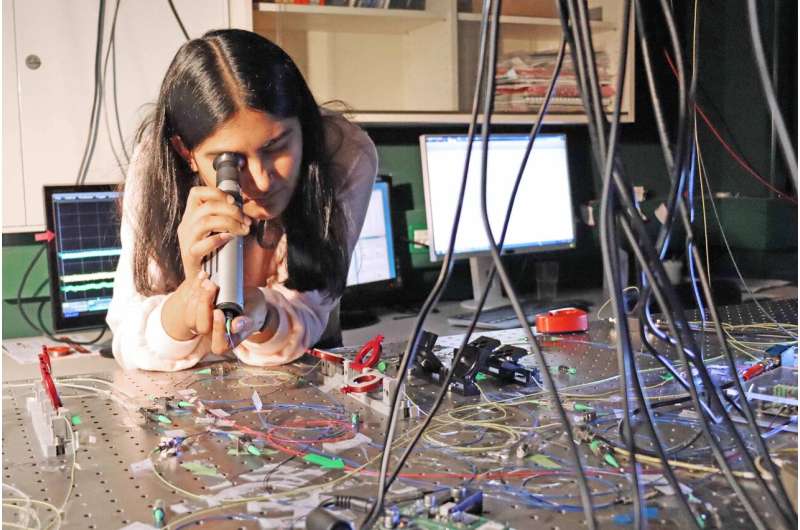
In work published in Science, the team led by Prof. Dr. Ulf Peschel reports on measurements on a sequence of pulses that travel thousands of kilometers through glass fibers that are only a few microns thin. The researchers were surprised by the results.
“We have found that the light pulses organize themselves after about a hundred kilometers and then behave more like molecules of a conventional gas, such as air, for example,” reports Prof. Ulf Peschel, the head of the group in Jena.
In a gas the particles move back and forth at different speeds, but still they have a mean velocity defined by their temperature. Although light pulses propagate through the glass fiber at an average speed of about 200,000 kilometers per second , they are not all equally fast. “The statistical distribution of their velocities equals exactly that of a conventional gas with a fixed temperature,” says Peschel.
As the researchers have now demonstrated for the first time in their recent publication, this photon gas can be cooled, for example, by a process known as adiabatic expansion. As in a real gas, the velocity differences of the particles decrease during cooling and the order in the signal sequence automatically increases. When the absolute temperature zero of 0 Kelvin is reached, all pulses propagate at exactly the same velocity.
The reverse process is also possible. “When the optical gas is heated, velocity differences increase,” explains Peschel. If all pulse velocities occur equally often, the disorder is at a maximum and the temperature is infinite—a state which cannot be reached in a real gas as it would require an infinite amount of energy.
“In contrast, a periodic modulation of the refractive index can limit the range of allowed pulse velocities in the glass fiber. In this way, all available velocity states can be equally excited, creating a photon gas of infinite temperature. If even more energy is added, states of extreme velocities are preferentially populated—the photon gas becomes hotter than infinitely hot.”
“For this state, which has so far only been described theoretically for light, a temperature below absolute zero is mathematically assumed,” says Peschel. He and his colleagues have now been able to create such a photon gas with negative temperature and show for the first time that it obeys conventional laws of thermodynamics.
“Our results will contribute to a better understanding of the collective behavior of large ensembles of optical signals. If we take the laws of thermodynamics into account, we can make optical data transmission more robust and reliable, for example by structuring pulse distributions to better match thermal distributions.”
More information: A. L. Marques Muniz et al, Observation of photon-photon thermodynamic processes under negative optical temperature conditions, Science (2023). DOI: 10.1126/science.ade6523. www.science.org/doi/10.1126/science.ade6523
Journal information: Science
Provided by Friedrich Schiller University of Jena

